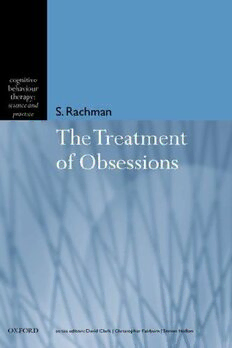
The Treatment of Obsessions PDF
171 Pages·2003·0.575 MB·English
Most books are stored in the elastic cloud where traffic is expensive. For this reason, we have a limit on daily download.
Preview The Treatment of Obsessions
Description:
In the past decade, important advances have been made in understanding the spectrum of obsessive-compulsive disorders; however, most advances in treatment have been directed at the comulsive element of the behaviour. It is estimated that for as many as one in three patients presenting with obseessive-compulsive disorder, the primary problem is the obsessions. Obsessions are repetitive, unwanted thoughts, images or impulses. This book describes how to conduct the first, specific cognitive treatment for obsessions, and provides a comprehensive account of the underlying cognitive theory and supporting experimental evidence. The book discusses patient assessment procedures, provides a detailed explanation of the specific technique, anticipates possible patient reactions and suggests tactics for dealing with them, and explores methods for assessing progress. Throughout, there are helpful case studies to illustrate aspects of the technique and the book closes with a 'tool kit' of forms and charts to allow the therapist to plan and record treatment sessions. This will be essential reading for all members of the mental health team involved in applying cognitive therapies, as well as those in patient support organizations and academics interested in abnormal psychologies.
See more
The list of books you might like
Most books are stored in the elastic cloud where traffic is expensive. For this reason, we have a limit on daily download.
